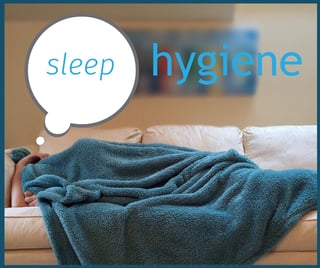There are night owls and early birds, but what if you aren’t either? The internet has created a new winged creature to describe the odd sleepers — the permanently exhausted pigeon. While this is good for a chuckle and a repost on social media, sleeplessness and excessive sleepiness can be a source of stress and frustration.
Sleep hygiene has become one of the main topics in health news in recent years. In a 2016 article in the New Scientist, Matt Walker, a professor at the University of California, spoke about the importance of sleep. “There is no tissue within the body and no process within the brain that is not enhanced by sleep, or demonstrably impaired when you don’t get enough,” Walker said.
So what is sleep?
There are five stages of sleep: stage 1, 2, 3, 4 and REM (rapid eye movement) sleep, according to the American Sleep Association (ASA). The ASA breaks down the time spent in each cycle: sleepers normally spend 50 percent in stage 2, 20 percent in REM sleep and 30 percent in the remaining stages. Your eye movements stop, and brain waves slow in stage 2. In REM sleep, the sleeper experiences dreams. Stage 1 is considered light sleep, and it is easy to wake someone. However, stages 3 and 4 are referred to as deep sleep.
Sleep disorders
Both sleeplessness, or sleep insomnia, and excessive sleepiness are due to an irregular amount, quality or timing of sleep. With sleep insomnia, the sleeper cannot fall asleep or stay asleep easily, according to Mediscape.com. About 40 million Americans describe having chronic, long-term sleep disorders each year. Below is a list of some common sleep issues and disorders besides sleep insomnia and excessive sleepiness from the National Sleep Foundation:
- Sleep apnea occurs when the sleeper stops breathing for about 10 seconds. It can cause low blood oxygen levels, depression, difficulty concentrating and snoring.
- Restless legs syndrome (RLS) urges the sleeper to move their legs at bedtime. People with RLS describe the sensations as bugs crawling on their legs.
- Circadian rhythm sleep disorders are a range of sleep disorders that affect a person’s biological clock. People with these disorders cannot fall asleep or awaken at socially appropriate times. For example, they may fall asleep at 3 a.m. and wake up at 11 a.m. On the other hand, they may go to bed at 6 p.m. and rise at 3 a.m. Some people most affected are shift workers and those who experience jet lag.
- Non-24 sleep wake disorder is a specific type of circadian rhythm sleep disorder. The sleeper’s sleep cycles shift around a 24-hour period. They may feel the desire to sleep during the day and find it difficult to sleep at night. The person’s sleep cycles can realign with conventional sleep cycles, but it will continue to shift throughout the year.
If you feel you or your loved one has a sleep issue or disorder, contact your primary care physician for assistance. Your doctor may prescribe sleep aids, suggest a sleep study, or look for medication interactions or symptoms of an underlying issue. Your wish for better sleep isn’t just a dream — it can become a reality.
![Duel-Logo-CFC-AYS[rgb]](https://blog.comforcare.com/hs-fs/hubfs/Duel-Logo-CFC-AYS%5Brgb%5D.jpg?width=525&name=Duel-Logo-CFC-AYS%5Brgb%5D.jpg)